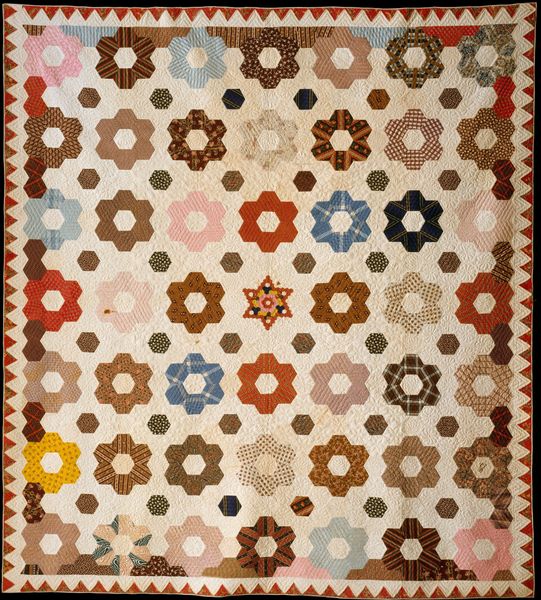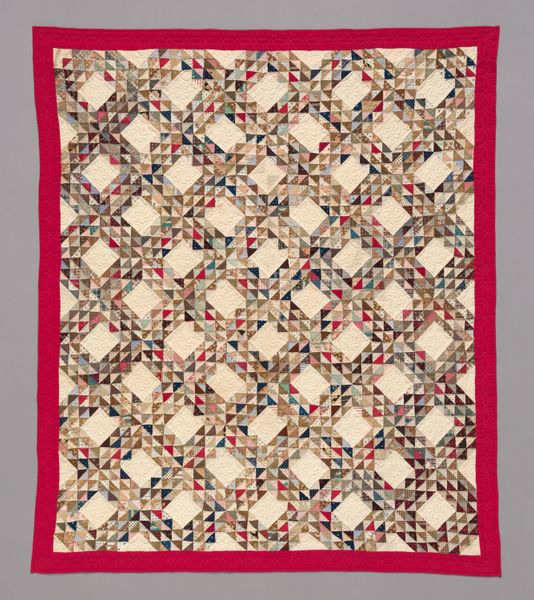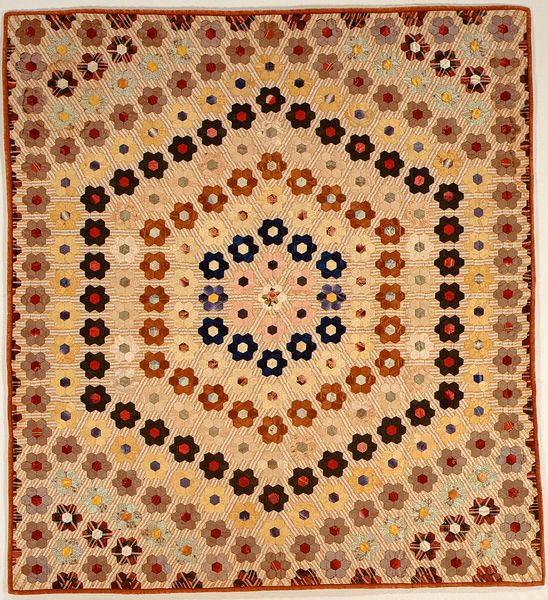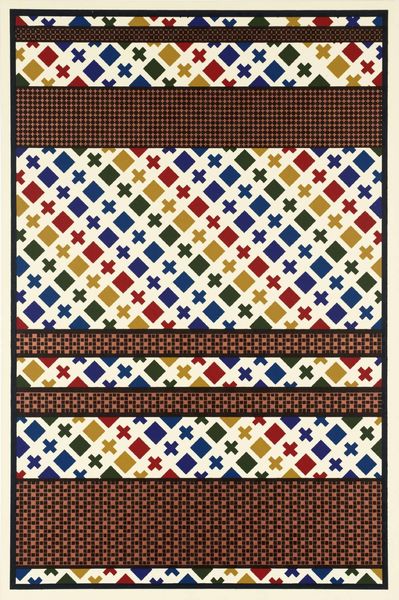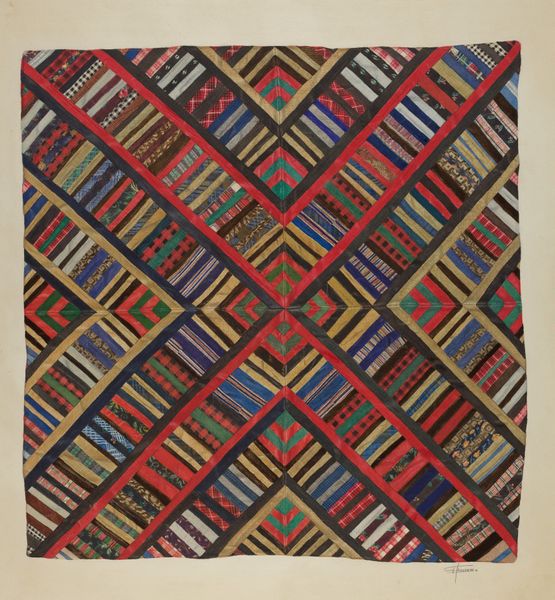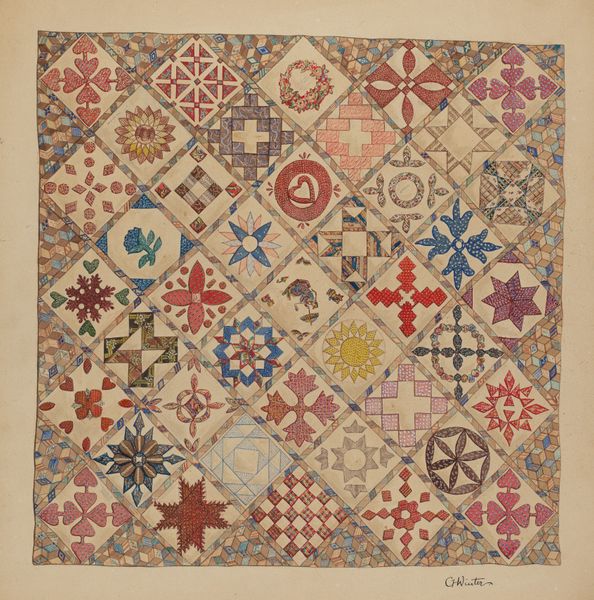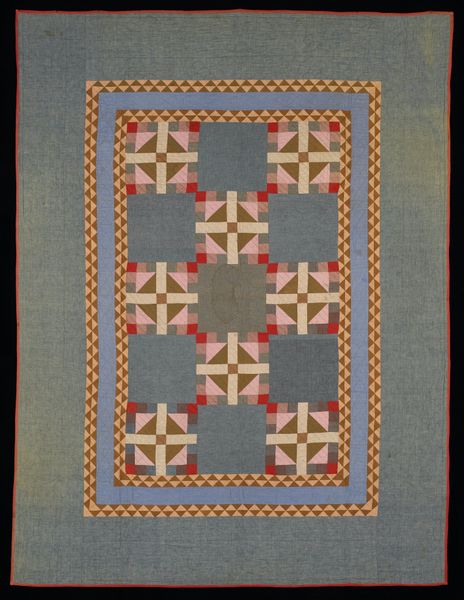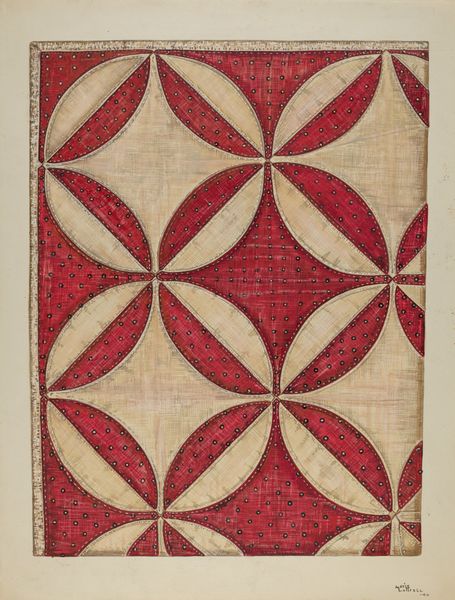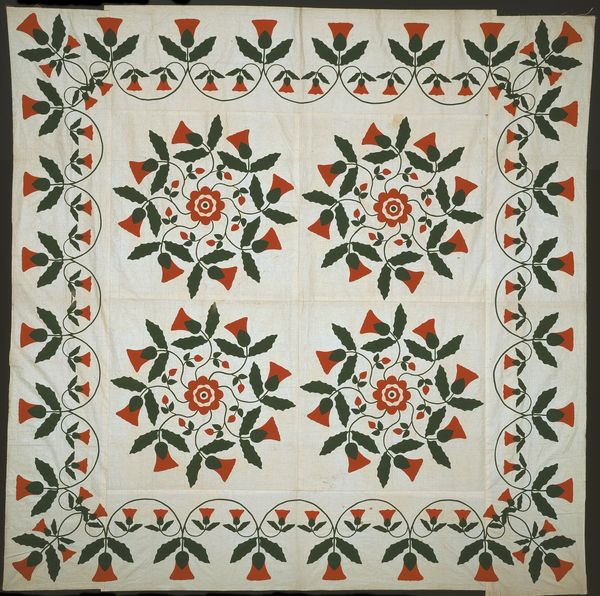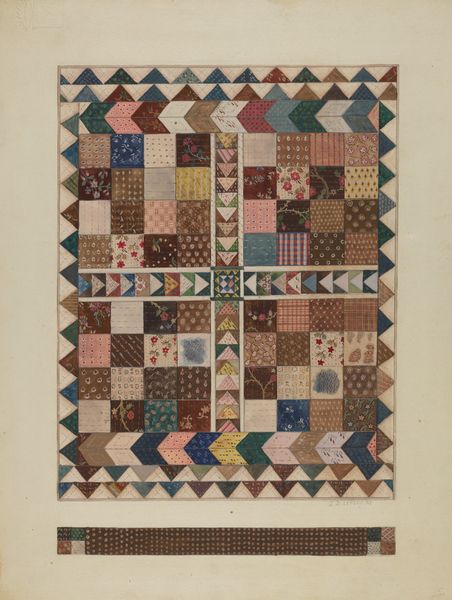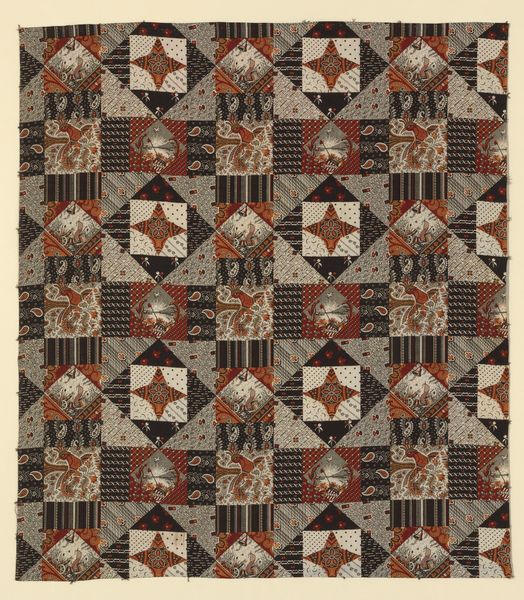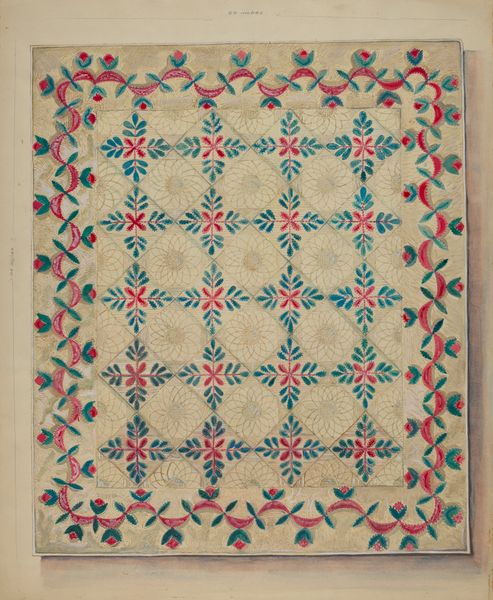
fibre-art, textile
#
pattern heavy
#
natural stone pattern
#
fibre-art
#
naturalistic pattern
#
folk-art
#
textile
#
geometric pattern
#
folk-art
#
organic pattern
#
geometric
#
repetition of pattern
#
vertical pattern
#
pattern repetition
#
layered pattern
#
combined pattern
Dimensions: 80 x 94 in. (203.2 x 238.8 cm)
Copyright: Public Domain
Editor: This is the "Star of Lemoyne Quilt," made between 1843 and 1846. It’s currently housed in the Met. Looking at the repetitive patterns and warm colors, there's almost something comforting about it. How do you see this textile? Curator: The comforting aspect you mention stems, in part, from its construction and the domestic labor embedded within it. This quilt wasn't produced in a vacuum; consider the processes of sourcing the various textiles, the labor of piecing them together, the very function it served within a home. Do you think that elevates or diminishes its artistic merit? Editor: That’s interesting! I guess I’d never considered how labor intensive a quilt is. Knowing that it was probably made entirely by hand certainly makes me see it as more of an art piece rather than just something functional. It changes the way I consider folk art in general, actually. Curator: Precisely! Now, consider the pattern. The "Star of Lemoyne," repeated across the surface, each star utilizing slightly different fabric. It's repetition, yes, but also variation. What statement might this be making, considering the social context of the time? Could it reflect both uniformity and individual expression? Editor: Perhaps, within the domestic sphere, making this quilt gave the maker a creative outlet? I guess the repeated patterns suggest a sense of order, while the unique fabric choices reflect an individual's preferences. Curator: Indeed. And those material choices tell a story as well – are these scraps from other projects? Repurposed fabrics? Consider what’s being materially re-circulated in a pre-consumerist world. The very act of creating such a utilitarian item transformed it into a narrative about resourcefulness and artistry. Editor: I never thought of the "recycling" aspect of it. Learning about the handcraft and material process has definitely broadened my understanding. It highlights the art in the everyday! Curator: Absolutely. By acknowledging the means of production, we can perceive not just beauty, but also labor and resourcefulness in a completely different dimension of seeing and understanding.
Comments
No comments
Be the first to comment and join the conversation on the ultimate creative platform.
